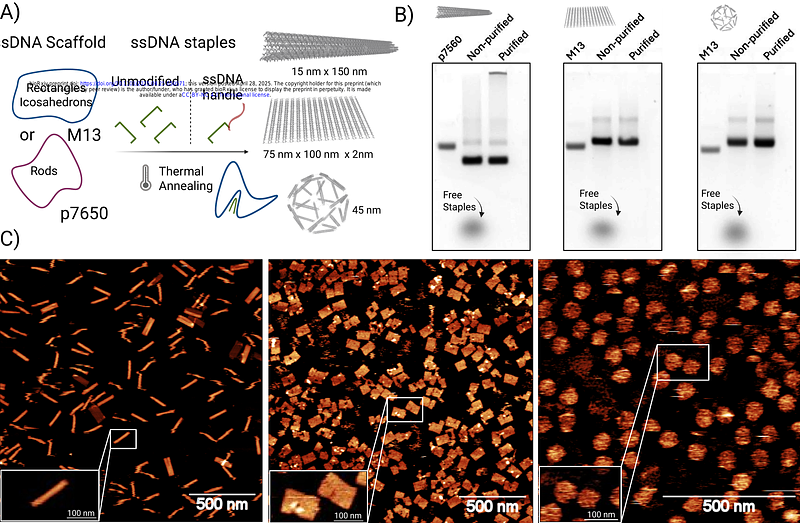Topology Determines DNA Origami Diffusion in Intestinal Mucus

Topology Determines DNA Origami Diffusion in Intestinal Mucus
Tollemeto, M.; Paffen, L. J. M. M.; Thamdrup, L. H. E.; Boisen, A.; Van Hest, J.; Patino Padial, T.
AbstractEfficient nanomedicine delivery across mucosal barriers remains a challenge, due to the complex and poorly understood relationship between nanoparticle design and mucus transport. Here, we present DNA origami as a platform to investigate how nanoparticle shape and ligand patterning influence diffusivity in mucus. By decoupling these parameters while maintaining identical material composition, we systematically evaluated the diffusion of rod, icosahedral, and rectangular nanostructures using high-resolution single-particle tracking. Our results reveal that diffusivity in mucus is not solely determined by shape or functionalization alone, but by their interplay: while unmodified rods diffused poorly, their mobility increased significantly upon antibody functionalization, reaching a maximum at an intermediate ligand density. In contrast, rods and icosahedra exhibited less pronounced and non-optimal responses to surface modification. These findings highlight the importance of topology-specific optimization in nanoparticle design and demonstrate the utility of DNA nanotechnology to uncover design rules for next generation mucus-penetrating drug delivery systems.